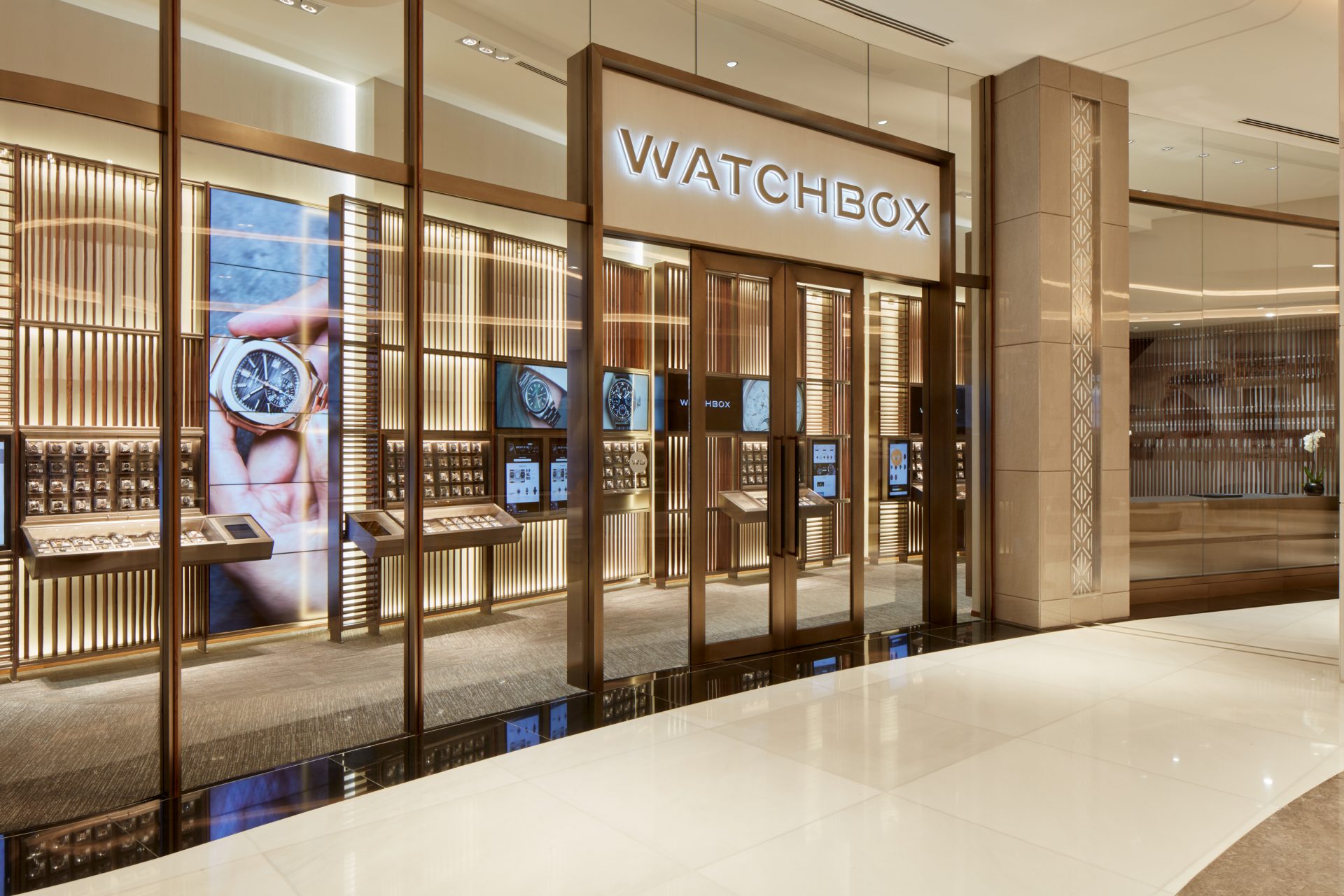In the five years since its creation, pre-owned watch trading business WatchBox has generated sales of $1 billion and is currently operating profitably at annual sales of $300 million. Next year the business will dramatically increase its physical footprint with new locations opening across the United States and around the world. What is working today and how is that shaping the future? Rob Corder spoke to WatchBox global CEO Justin Reis to find out.
WATCHPRO: British pre-owned specialist Xupes was acquired by Chrono24’s parent company in October and Chronext announced it was going public and then pulled out of its IPO just weeks later. It seems the sands are shifting in the pre-owned sector in Europe. Do you have a view on that?
JUSTIN REIS: Chronext operates in a very different part of the market, both geographically and from a positioning standpoint, so we rarely encounter with them or other European players.
From what I can see from publicly available information, Chronext is involved in a lot of new product and at a lower price point than WatchBox. We don’t see it as competition so I don’t really have a strong view on what is happening there.
WATCHPRO: The broader issue is that the secondary market is alive with interesting changes and money is flooding into the space from primary players such as Richemont, Bucherer and Watches of Switzerland. That certainly helps from a respectability standpoint compared to the olden days when pre-owned and grey market were lumped together as pariahs of the luxury watch industry.
JUSTIN REIS: I totally agree. When we started WatchBox five years’ ago, there was little understanding or acceptance of the pre-owned watch business. It is going in multiple directions now, horizontally and vertically, and that is exciting. But nobody truly knows where it will end up.
One of the things that we think about every day is how to deliver what our customers want. As long as we are taking care of that customer with the right product and service, that will direct our business plan going forwards.
There are so many players in this sector that there are a number of directions it can go, but what we always want to do is maintain a business model where we have the best access to the right product and brands for our customers. We cannot be all things to all people. We need to have a point of view, and in our case it is being strong with independent watchmakers, and with the top four brands: AP, Rolex, Patek and F.P. Journe.
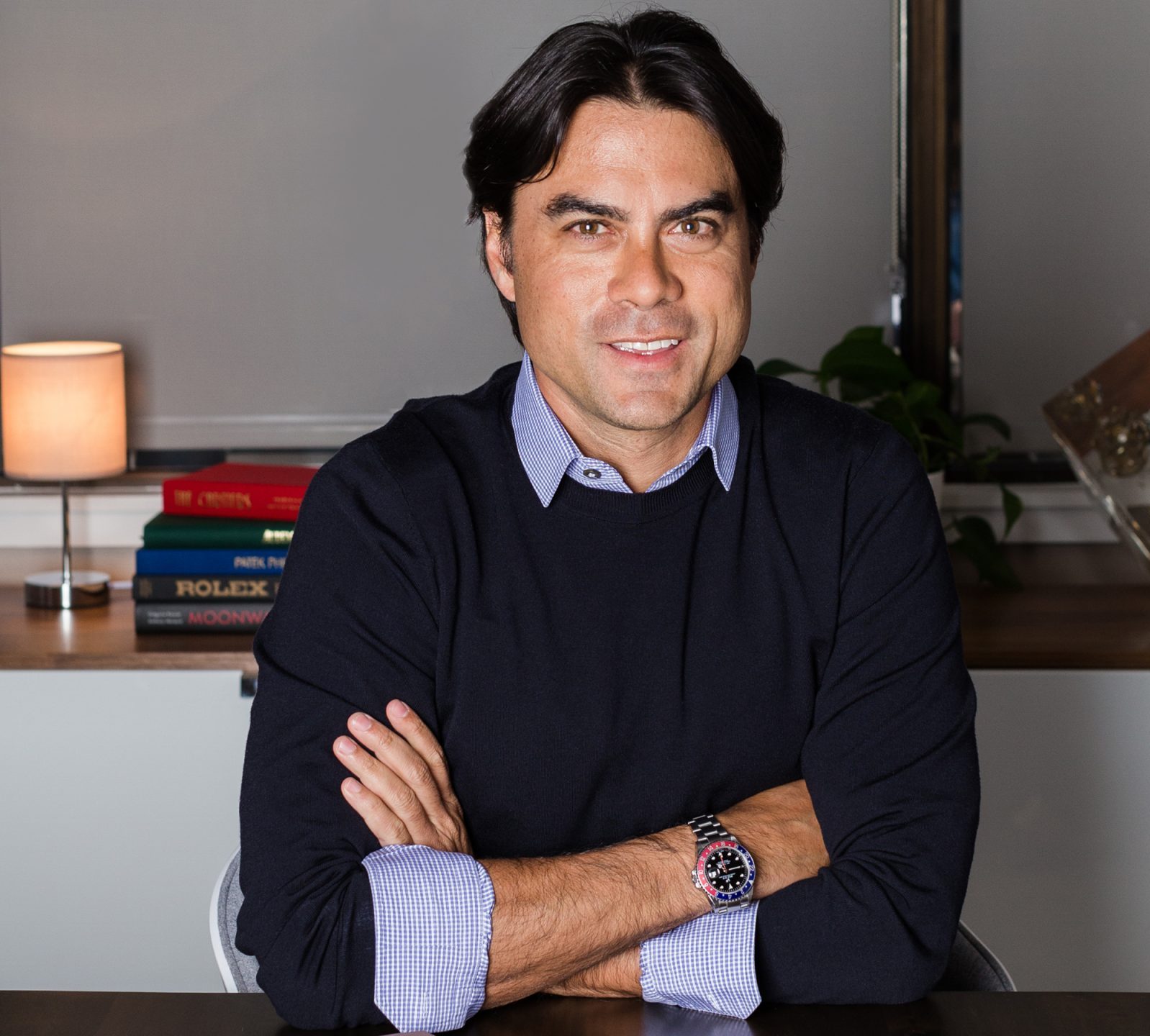
WATCHPRO: Just to be clear, when you are talking about independents, you could say all of those four are independent because they are not part of LVMH, Swatch Group or Richemont. Is that what you mean or are you also focusing on the low volume artisan independents like Voutilainen, Gronefeld, Philippe Dufour, etc?
JUSTIN REIS: There are two ends of the spectrum. At one end are the top four independents I mentioned that are not part of the big groups, then you have the low volume independents you are listing. In the middle you have group brands like IWC, Breguet or Lange & Sohne, which form only a small part of our business.
WATCHPRO: It feels like WatchBox has been around for more than five years, and I must have been reporting on it since before it even launched. How has the business evolved and what does a typical WatchBox customer look like today?
JUSTIN REIS: The customer has certainly evolved. You often hear about growth of customer numbers but the more significant change has been that the average selling price per watch has increased from around $8,500 when we started to close to $20,000 today. That has been an intentional move by us where we have focused increasingly on higher value customers, which are typically genuine watch collectors.
Our business is built around not just finding new customers, but we focus on how quickly we turn them into collectors because they behave very differently to customers that just want to buy a single watch.
Our belief is that customers who come to WatchBox should last a lifetime, and it is our job to make sure we keep them engaged with our education, our media and that we build long term relationships through our client advisors.
We have only been around five years, and what we have found is that our customers are incredibly loyal and they come back to listen to our advice. It is kind of like how wealth management works: our client advisors are able to introduce brands and products that customers may want to take a look at and get information about.
It is a very different model to most others in this space, and the challenge for us is to work out how we scale it on a global level and offer the same quality concierge service in every market. That is what we are investing in. It is all about developing the right level of touch so that customers continue to be engaged with our business.
WATCHPRO: WatchBox has just shared data that says you expect to do $300 million in sales this year, and will have generated revenue of over $1 billion since launching the company five years’ ago. Has that growth come mainly from doing more business with the same customers or is your customer base also growing?
JUSTIN REIS: What we see is that 50% of our business comes from repeat customers. That is testament to the stickiness of the platform as we grow year on year. We certainly have new customer acquisitions, particularly as we open new offices.
We have organic growth, particularly through referrals from our best customers, and that is the best new business we can get. What we see is that the average first purchase price from a customer who has been referred to us is much higher than if they come to us in any other way.
In addition, by opening up local offices and lounges closer to different communities, we are a big believer that we will build brand awareness and attract customers. This is not a traditional brick and mortar strategy, it is very much about building these lounges for a community.
I know ‘community’ is an over-used buzz word, but it is a cornerstone of what we do. We have to join our customers and our client advisors together into an impenetrable group. We have done this before over the past five years as we have successfully opened in cities like Dubai, Singapore and Hong Kong.
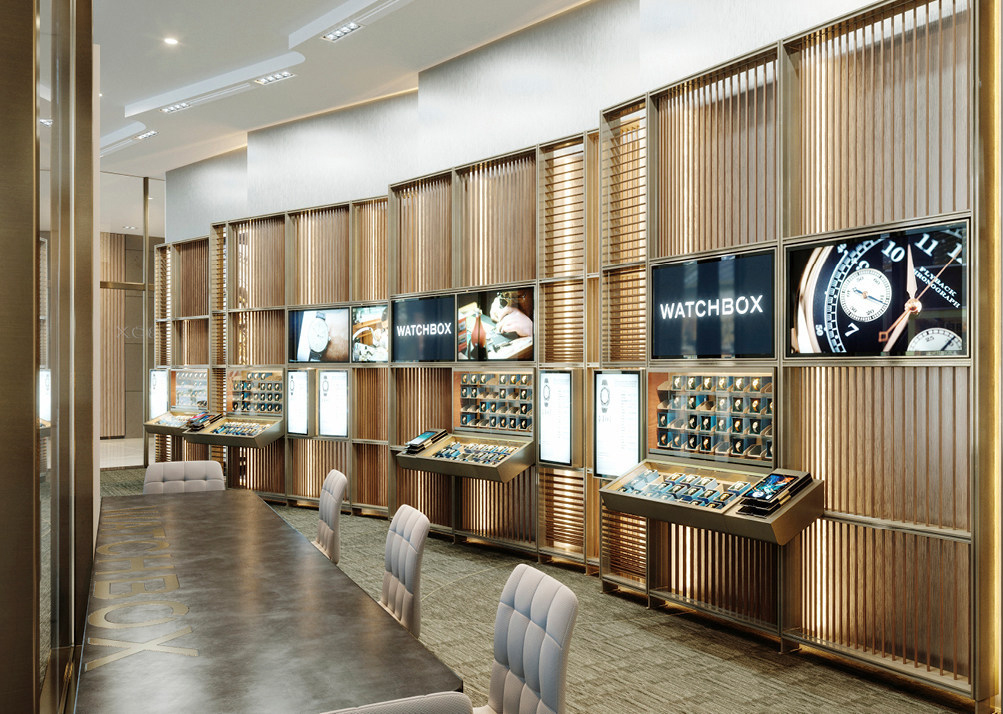
That is much more difficult than opening locations in America and what we have found is that they generate tremendous revenue growth within 12 months of creating them.
Extending that domestically in the US is important for us now, and we will continue to add locations around the world.
WATCHPRO: What will people see and experience in your new locations around the United States? Is it retail? A trading office? A lounge?
JUSTIN REIS: If you go to our places in Hong Kong or Singapore, you will see they are two to three thousand square foot lounges. They have available inventory of between 50 to 150 watches. There is a media component where we are able to do video and podcasts and shoot on-location events.

One of the benefits we bring is that, when we bring collectors in, we build events around watches and education. We give consumers access to both the products that we sell and also we have really intelligent and knowledgeable watch experts that can talk passionately about the subject.
The principals of our business have been tried and tested in other sectors, primarily in financial markets. We are dealing at a price point where you have to trust us before you buy into a brand you have never heard of.
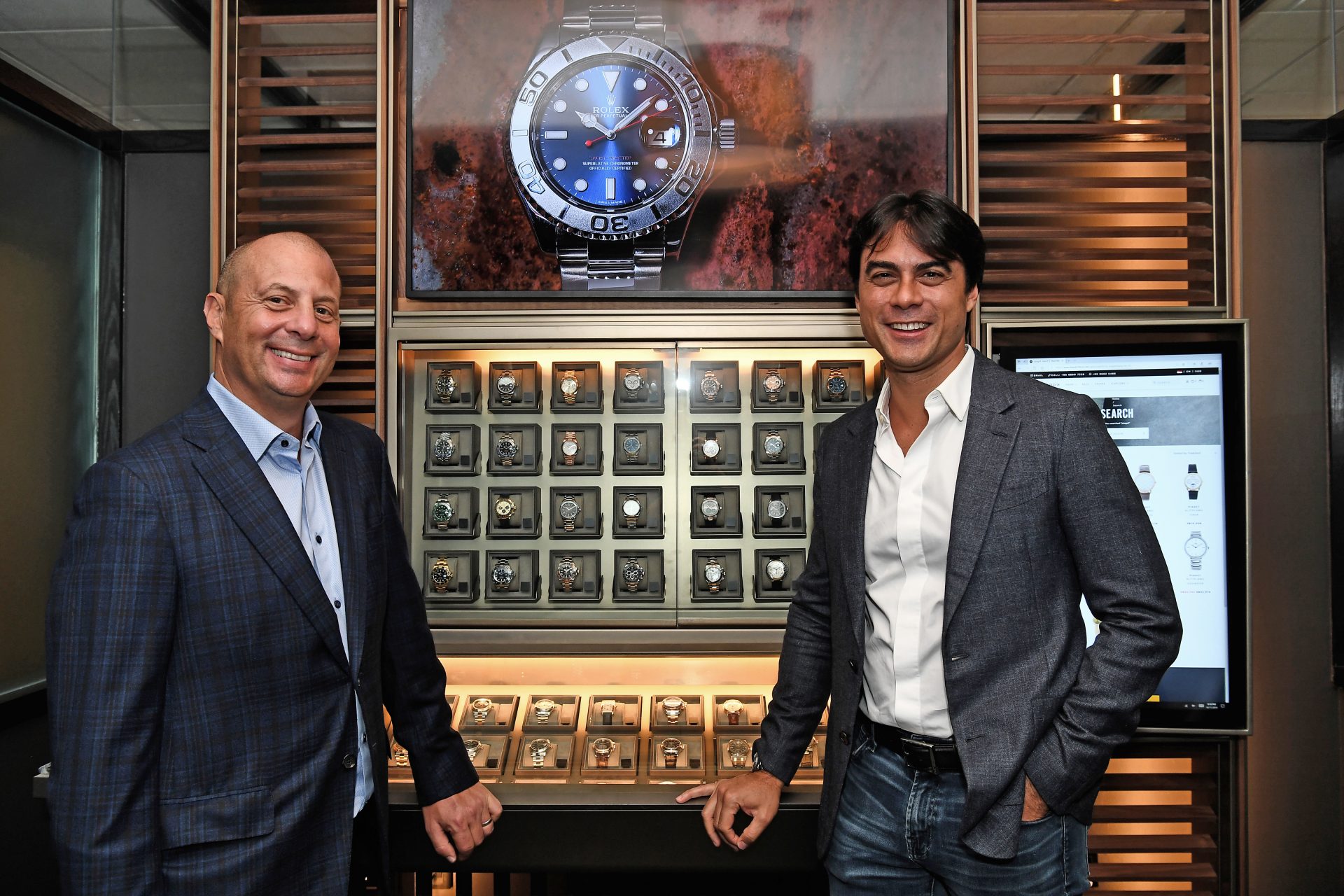
Customers rarely come and buy a watch the first time they experience a new brand with us. They will probably go away and do their own research online before coming back a few times and eventually getting to a transaction. That is part of our strategy. How do we build that trust with customers in new locations?
WATCHPRO: I am still struggling to visualize what a customer will see at a WatchBox location. Is the concept similar to an AP House or Material Good where they have lavishly appointed lounges like boutique hotels?
JUSTIN REIS: Think of it more like a mini Soho House. It is somewhere people can come with friends to relax. It is very inclusive, you don’t have to be a member to come in. They are above ground locations so you will not find us on high streets, but they will be in central locations where we are easy to find.
WATCHPRO: It is interesting that you are speaking about average transaction values of $20,000, which is the sort of price people have to pay these days for a steel Rolex. Do you think secondary market players like WatchBox have contributed to the overheated demand and rising prices?
JUSTIN REIS: The evolution of price and the scarcity of watches is something that has been happening for some time, and no single company like ours has been able to dictate prices but the wider acceptance of pre-owned has definitely contributed to demand. Once a product becomes unavailable at retail and the price rises above the retail price, it draws in new buyers that would not have previously been interested in watches.
Where we have participated is that, because we are global, we have access to customers around the world that are looking to buy and sell. That has helped us to meet demand because we are able to buy the right product from customers in many countries.
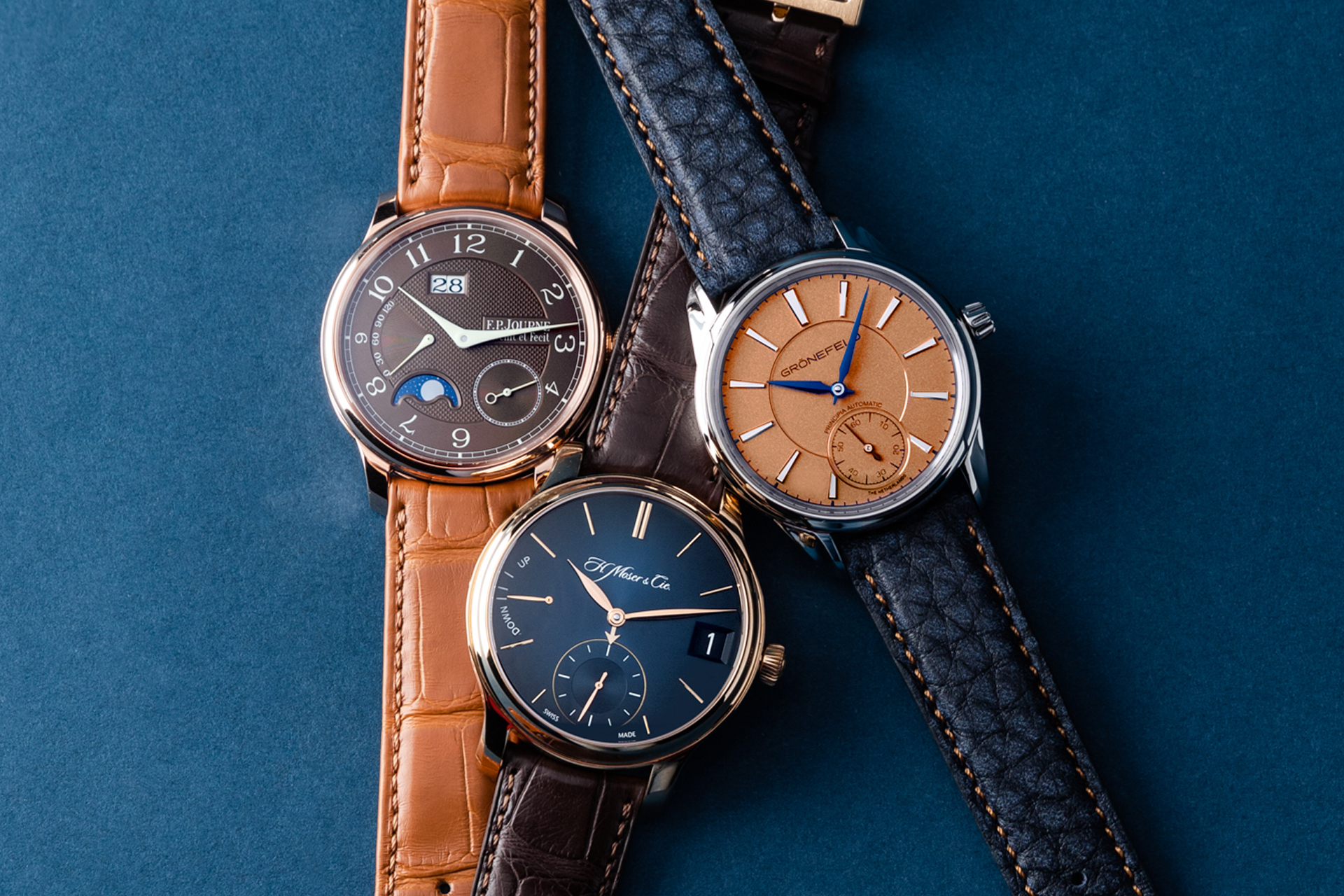
We have seen prices rise far beyond where we thought they would ever get to and for brands that have never experienced these types of increases. This year, prices and market activity have been changing so dramatically for many players in luxury watches that it is affecting businesses in both the secondary and the primary market.
WATCHPRO: If I were to browse WatchBox’s website, would I find any watches there that are selling for under retail prices?
JUSTIN REIS: There is a mixture. For the top brands, depending on which reference, they are trading at above retail but other brands are trading below. However, the rising tide has definitely been floating all boats. You are seeing watches that were once trading for 30-40% off now selling for a 15% discount. You are seeing a shift upwards across the board. The products that are most recognizable have seen exponential rises.
WATCHPRO: Is the situation this year being driven by supply shortages from the watch manufacturers that had to close factories for three or four months and then reopen cautiously at the start of the pandemic? Has that flushed through over-supply and cleaned up the grey market for many brands, thus firming up prices?
JUSTIN REIS: It has certainly contributed. You are also seeing the evolution of new customers that are getting into collecting. Nobody anticipated that for watches in 2021 and I see that particularly affecting demand for independent watchmakers.
People are trading these watches because there are so many more collectors ready and wanting to purchase a limited edition from a brand that might only produce 100 or 150 pieces. The confidence level in a brand’s equity in the secondary market has a strong influence on the customer’s willingness to spend.
We see the watch industry in a very strong position because strong secondary market prices are giving customers a lot confidence so watches are easier to sell. At the same time, there has been a lot of clean out of product from global inventories so supply is tighter. That puts brands in a very healthy position.
For us at WatchBox, we need to make sure we give access to the best products. More than 95% of our watches are bought from end consumers and we are disciplined about what we buy.
Although we have watches from many brands on our platform, we focus on the top four along with independents. Rolex will always be a significant part of our business because it represents 25-30% of the total watch market. But we are disciplined. We aim to dominate the high end, and we do not see very much competition in that space.
WATCHPRO: There must be a spectrum to your business. It may be much more competitive if you are trading the likes of a Submariner, a GMT Master, a Nautilus or Royal Oak, but surely it is vital to be offering access to these watches along with the grand complications or the super-rare watches from independents?
JUSTIN REIS: We very much have bespoke relationships with our customers. We deal in complicated watches all the time. A day will not go by when we are not selling high end complications for over $100,000 to our customers. That is where it gets really exciting.
We deal with a lot of Rolex, but we are not in a category where we are trading several hundred Batmans and Hulks per day. Our customers might start building their collections with a Rolex, but we take them quickly on a journey where they can collect other brands. We have to educate them and make them feel comfortable about the brands, whether that be Moser, Kari Voutilainen or De Bethune.
WATCHPRO: Would a steel sports watch from Rolex be seen as a gateway drug, and a loss-leader for you on the way to trading something higher priced with better margin?
JUSTIN REIS: Customers are all different. There are some who just want to stay with Rolex because they feel very comfortable with it and we can take them up and down the value chain of the brand. There is a lot of Rolex product that is trading at over $100,000, and we do try to focus on those pieces that you are unlikely to find anywhere else.
At the same time we have customers who are yearning for something different. As collectors, a lot of us have moved on from the usual brands. We had an event at our office a few days ago with Moser and a lot of collectors at that event already had a lot of Moser watches. One of them owned seven!
We focus on brands that we genuinely respect and have a point of view on. That makes us popular with customers and unpopular with others. Because we are a business that buys and owns our own inventory, we have to put our money down on watches that we believe in. Effectively, WatchBox and our customers are both different types of watch collectors.
WATCHPRO: Are there brands that you actively avoid? I would have thought Richard Mille would fit with your business model, but I never hear them mentioned other than in YouTube videos warning prices are going soft.
JUSTIN REIS: To the contrary, I would not way we have a problem. I would just say RM is different to other brands. They are very tightly held within the dealer network and they are widely distributed to a different type of customer.
There does not appear to be much of an overlap between RM customers and our customers. We might have 10 to 20 RM pieces at any one time. It is a brand we observe and invest in. We could be bigger in RM, and see an opportunity to grow in Asia with the brand. But what we see in the United States is that it is a small market.
WATCHPRO: When you say you have a point of view on brands, I am tempted to go through them one by one and get your opinion. Vacheron Constantin is another interesting brand that appears to have been strengthened by the pandemic.
JUSTIN REIS: Vacheron would be outside our top five. We deal in it, we love Vacheron. It is just an issue of liquidity for us and being able to find the right inventory. There are certain references, particularly the more complicated pieces, that our sales team swears by. Overseas models like the blue dialed watch on steel bracelet is one of our most popular pieces. If you look at all brands with watches trading for over $20,000, we are active with most of those brands.
WATCHPRO: It is interesting that you say WatchBox is like a super-collector because you put your own money down to buy every watch and add it to your inventory. A key difference with an individual collector is that he or she may not care about a return on investment for each watch, they just love what they love whereas you have different motivations. You must have to look forward and invest in watches you feel will rise in value.
JUSTIN REIS: We are an inventory-based operation that has to own product. We intentionally chose that business model when we set up the company. If you deal with inventory in any other way, there is a lot of friction if you do not own the watches. You need to authenticate the watch, service it, refurbish it and give a warranty. If you are not touching each watch, that is a problem.
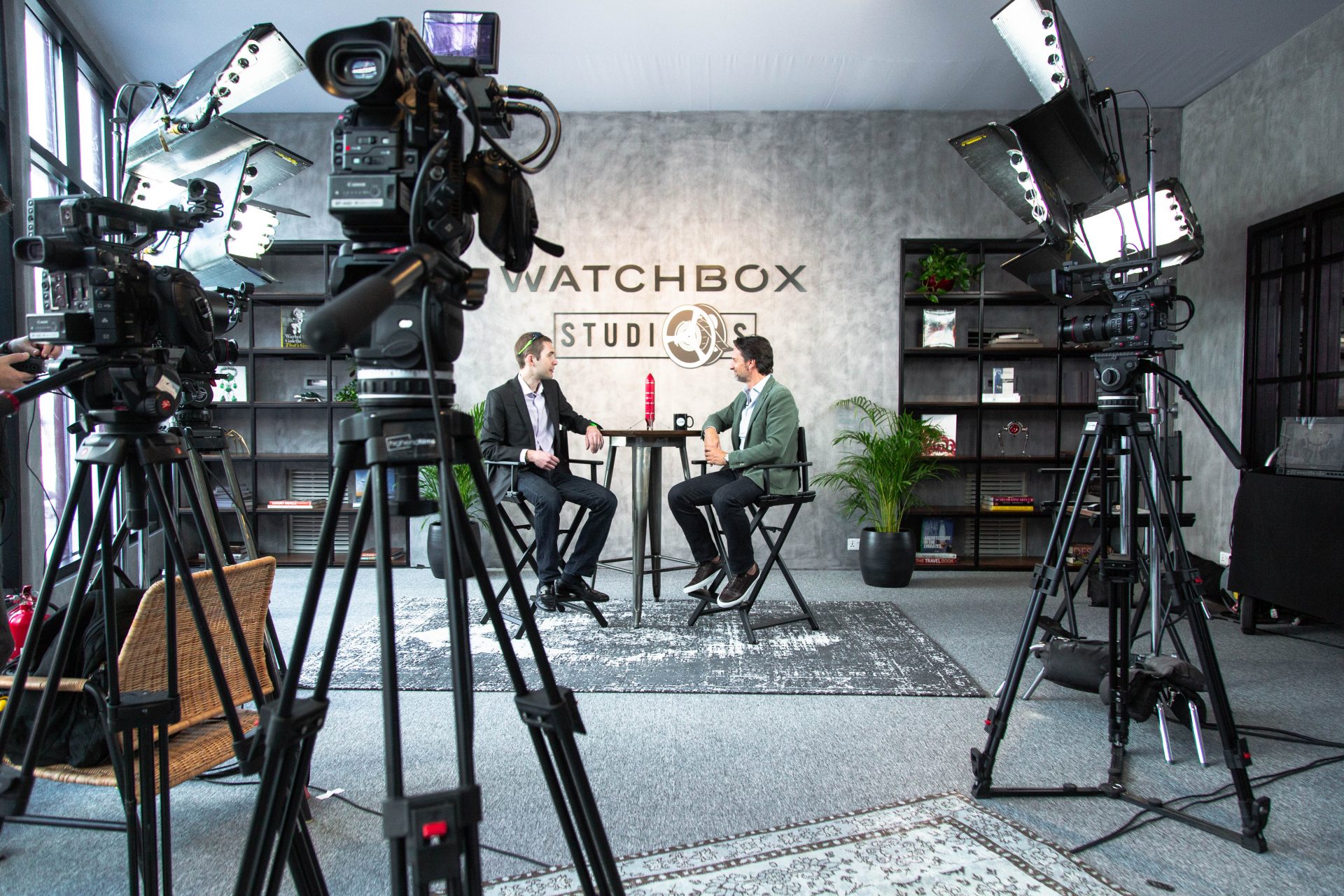
The secondary market has changed. Four years’ ago, everybody was saying that capex-light was the way to go where you did not own what you were selling. I believe we have the winning business model because people trust that what we present is available, genuine and as-described.
On your specific question, we need to be able to buy and sell in rising markets and in downward shifting markets. Our business model allows us to manage our inventory effectively in any market conditions so that, on any day, you can come and browse over $150 million worth of watches.
WATCHPRO: Do you have your eye on any future trends like fractional ownership and non-fungible tokens (NFTs)? There seems to be a bit of buzz connecting the watch industry to these emerging technologies.
JUSTIN REIS: This whole concept of NFTs is going to be repositioned in the future. There is going to be a development very soon around asset-backed NFTs. That is something where a collector of art or watches will not just buy a digital NFT, they will buy the NFT linked to a physical asset. You are seeing this blowing up with trading cards already and there is no reason why it will not spread to other collectibles.
It is on our radar. It appeals to a different customer who might want to show their asset holdings in different ways. I expect to see developments in the next six months in sectors like wine, cars and other collectibles where the NFT will become something much more powerful than it is today.
WATCHPRO: WatchBox seems uniquely well-placed to offer NFTs linked to physical watches or even bundles of watches that can be traded. You have the watches and you have the trust of customers so you could effectively create a million dollar bundle of watches and sell fractional ownership of that bundle using NFTs that would rise in value like stocks if the value of the watches increased. It would also allow collectors to say they have a stake in very desirable watches like a Philippe Dufour, an F. P. Journe or a Gronefeld. I can just imagine you and Danny [Govberg] getting excited about that.
JUSTIN REIS: Let’s just say you are teasing something that is very close to our hearts. We will let you know how that develops, but it is almost like you have a bug in my office!
WATCHPRO: You recently acquired a controlling stake in De Bethune. Is that a sign of your confidence in the long term health of independent watchmaking?
JUSTIN REIS: There are so many new social media channels now on Instagram and Facebook that are dedicated to independents and brands outside the top five. They are making so few watches and demand is so strong that it is inevitable that you will see these businesses continue to rise. The next five years will be their time. It has been coming for a while, but social media and mainstream media like WATCHPRO has brought collectors and the watchmakers or owners of these brands very close together.
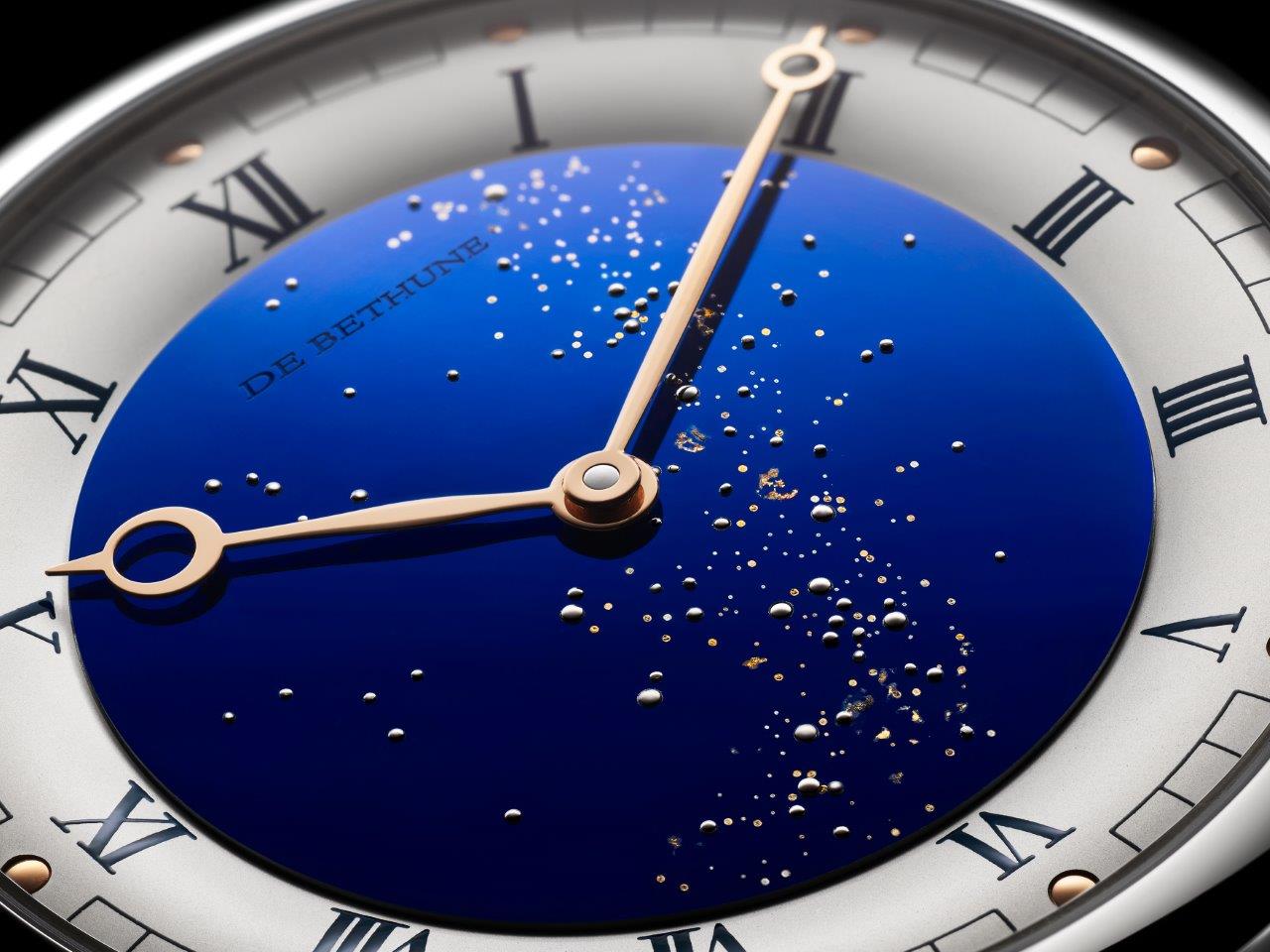
Take Moser, for example, the team has been phenomenal at making themselves accessible to collectors. That is really an advantage against the largest brands. I am sure you get to speak to Edouard Meylan regularly, but when did you last get to speak to the CEO of Vacheron?
WATCHPRO: When you talk about five years for independents to shine, that is a distant enough horizon for it to have a profound effect on the wider industry. It will encourage more investment into independents, it could spur watchmakers coming out of school to start their own businesses rather than go into the service sector. Five years is a tantalizing prospect.
JUSTIN REIS: I would really hope so. It is not just watchmakers coming out of school that could start their own brands, it is watchmakers working for the big brands that could leave and create something. This is where you will see some interesting shifts in the Swiss watch industry.
I see vulnerability in mid-tier brands that might make more than 10,000 watches per year but are outside the top five, have a lot of inventory, are very widely distributed and are less agile.
I see great opportunities among brands with lower production volumes. They have a completely different risk profile. They only have to take production from 200 to 1,000 pieces, as oppose to brands increasing from 15,000 to 20,000, which is much harder.
There are barriers for these artisanal independents. They may not accept capital investment because it is something they are not used to.
WATCHPRO: It seems to me a lot of independents are not just attracting capital, they are getting tooled up with smart business advisors that can manage the commercial side of things so that everybody benefits.
JUSTIN REIS: It is an artisanal industry. They are not designed to absorb private equity checks. They don’t necessarily want to grow. That is part of their beauty. Even if De Bethune doubled its production, it would still be small and that is what keeps them special.
The problem for collectors is that, as demand continues to rise and supply stands still, it is just going to drive up activity and prices on the secondary market, which is what you are seeing across so many independents right now.
WATCHPRO: It does not need to be Wall Street dollars flowing into the independent sector, it could just be good advice on how to profit as a watchmaker from the rising demand and prices. If prices are doubling on the secondary market, why wouldn’t an independent simply increase prices per unit in the primary market and trouser the higher profits?
JUSTIN REIS: Independent brands are being perceived today as mechanical art. If you think about how art has performed in years gone by because of the demand and limited supply.
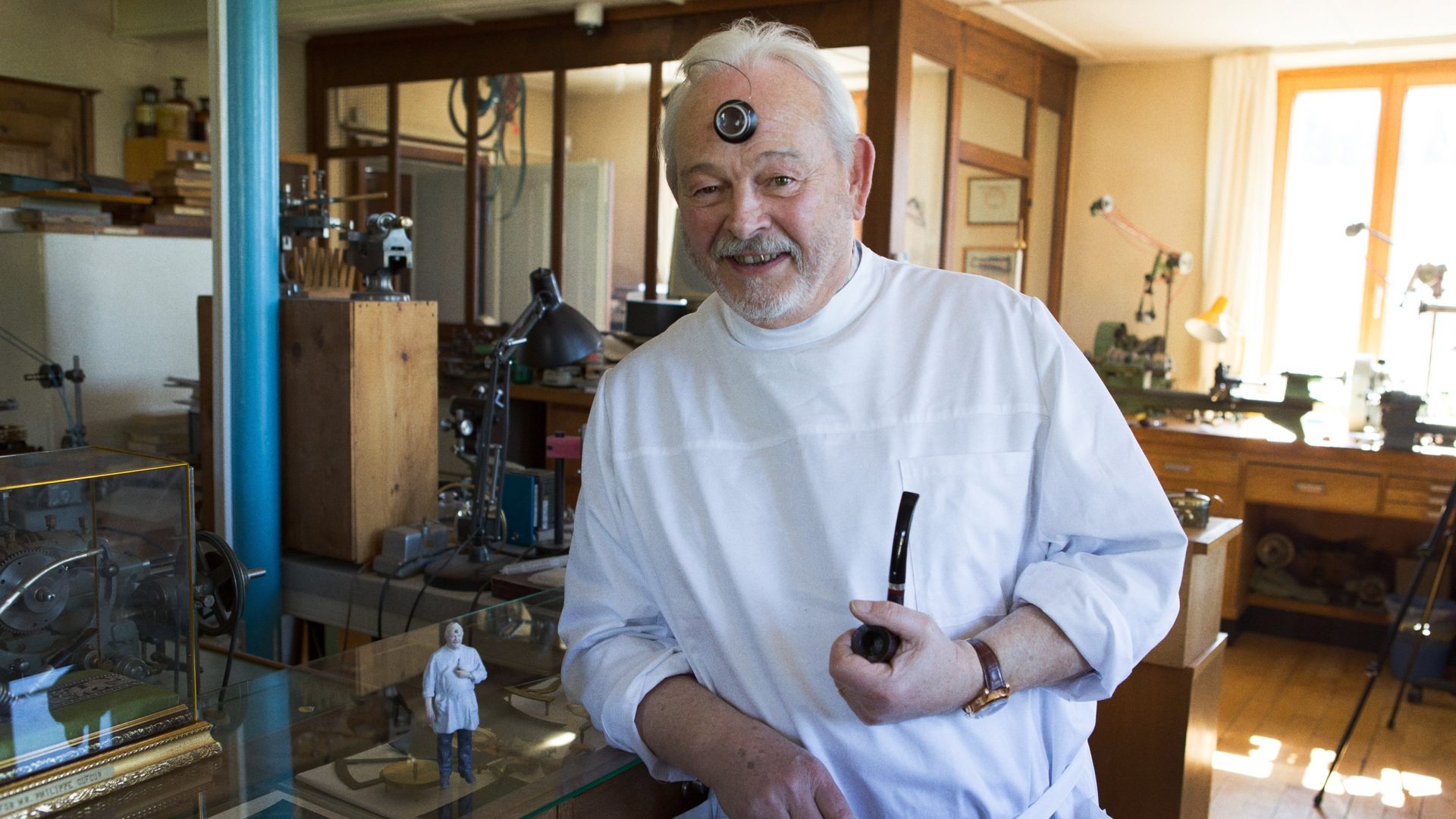
This is what is happening with independent watches today. Look at Rexhep Rexhepi or Francois Journe. These guys are artists and their watches are viewed as art. We are seeing customers who have been buying art crossing over into viewing watches as mechanical art. When you see watches from F. P. Journe and Philippe Dufour selling for hundreds of thousands of dollars over their intrinsic value, that is because they are being viewed as art.
WATCHPRO: It is remarkable how the pre-owned sector has transformed over the past five years. We used to talk about flipping Hulks and Batmans and now we are weighing up the merits of independent watchmakers as modern day Da Vincis or Picassos. It is worth noting that not every pre-owned business is riding this wave successfully, and many are burning through investors’ cash rather than making profits.
JUSTIN REIS: For us it has always been about building our business profitably. This year we will hit double digital EBITDA margins, which is something we are very proud of. We have sustainably grown and re-invested in our business — opening in new locations in the United States and in new countries.
We have a method for finding new watch collecting communities and piping them back into our platform. If we can find new locations and get closer to customers, that is the direction we will go in.
WATCHPRO: When might WatchBox get something going in the UK?
JUSTIN REIS: Definitely soon. The VAT issue means that a lot of our inventory is not transportable into the UK market, but we do have ideas on how we can do it.
We do not want to announce anything happening in London until we can fully commit to it like we are with the other locations we have announced.

